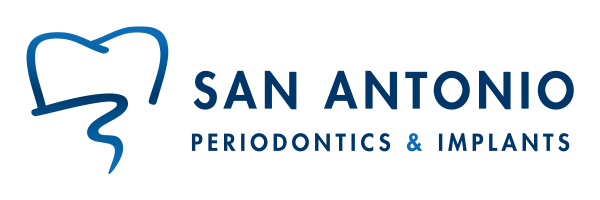Digital Workflow
Digital workflow in periodontics refers to the seamless integration of digital technologies throughout the entire periodontal care process. From digital impressions and 3D imaging to computer-assisted planning and guided surgery, these tools help periodontists like Dr. Maller provide more precise treatments with better outcomes. The digital workflow replaces traditional methods, such as physical molds and manual charts, with digital systems that are faster, more accurate, and more comfortable for patients.
Key components of a digital workflow in periodontics include:
- Digital Impressions: Replacing traditional molds with intraoral scanners that capture highly detailed digital impressions of the teeth, gums, and bone structure.
- 3D Imaging: Cone beam computed tomography (CBCT) and digital X-rays provide three-dimensional images of the oral structures, giving a more comprehensive view of the patient’s anatomy.
- CAD/CAM Technology: Computer-aided design and computer-aided manufacturing systems allow for the creation of precise restorations like crowns, bridges, and implants.
- Guided Surgery: Surgical planning and execution using computer-generated templates that direct the placement of implants ensures incredible accuracy.
- Digital Record Keeping: The use of digital patient records helps ensure better organization, quicker access, and enhanced communication.
- Guided 3D Printing: Guided 3D printing is a cutting-edge technology that creates customized surgical guides based on 3D imaging, ensuring precise and accurate placement of dental implants or other procedures.
Through the integration of these technologies, Dr. Maller offers a smoother, more effective treatment experience, making periodontal care more predictable and accessible.
The Benefits of Digital Workflows in Periodontics in San Antonio, TX
Enhanced Accuracy and Precision
One of the most significant advantages of a digital workflow is its ability to provide highly accurate and precise data, which is essential for successful periodontal treatments. Traditional methods, such as manual impressions or X-rays, can lead to inaccuracies due to human error or limitations in technology. However, digital tools like intraoral scanners and 3D imaging capture far more precise details of the teeth, gums, and underlying bone structure.
For example, digital impressions eliminate the need for messy and uncomfortable traditional molds, providing an exact replica of the patient’s oral anatomy. This high level of precision helps in the planning and placement of dental implants, bone grafts, and other restorative treatments. The accuracy of these digital tools ensures that restorations fit better and that procedures are performed with optimal results.
Benefits include:
- Fewer adjustments for dental restorations
- Enhanced implant placement accuracy
- Better-fitting prostheses, crowns, and bridges
- Reduced risk of complications during surgery
Improved Patient Experience and Comfort
Patients often find traditional periodontal procedures — such as impressions, X-rays, and surgical treatments — uncomfortable and time-consuming. Digital workflows significantly improve patient experience by reducing the need for invasive, uncomfortable, and time-consuming procedures.
For instance, intraoral scanning eliminates the need for traditional molds, which are often difficult to tolerate, especially for patients with a strong gag reflex or those who experience anxiety during dental visits. The 3D imaging provided by CBCT machines offers a more comfortable and non-invasive way to view and diagnose underlying issues with the bone and tissues. In addition, digital technologies streamline the treatment process, reducing the time patients spend in the dental chair.
Moreover, the integration of digital record-keeping ensures faster and easier access to medical history, previous treatment plans, and images, making follow-up visits more efficient and hassle-free for patients.
Faster Treatment Planning and Execution
Digital workflows accelerate the treatment planning process by providing immediate access to high-quality digital scans and images. Instead of waiting for physical impressions or X-rays to be developed, Dr. Maller can quickly evaluate the digital data and make decisions in real time.
With digital technology, the steps involved in periodontal treatment planning are quicker and more streamlined with:
- Immediate results from intraoral scanners or CBCT scans
- Faster design and approval of restorations using CAD/CAM technology
- Real-time decision-making based on 3D imagery
- Automated surgical guides for quicker and more accurate implant placements
The faster turnaround for treatment planning not only reduces the time spent in the office but also speeds up recovery and overall treatment timelines.
Minimally Invasive Treatment Options
Digital workflows play a pivotal role in providing minimally invasive treatment options. For example, the use of guided surgery allows for precise placement of dental implants with minimal incision, which reduces tissue trauma, swelling, and recovery time.
Minimally invasive procedures are a cornerstone of modern periodontal care, and digital technologies enhance this approach by providing real-time data that guides Dr. Maller during procedures. The ability to visualize bone structure and tissue in 3D allows for more targeted and precise surgical interventions, improving overall outcomes.
Enhanced Communication and Collaboration
Digital workflows enhance communication between Dr. Maller and his patients, as well as between the practice and any specialists involved in treatment. Digital tools allow for instant sharing of diagnostic images, treatment plans, and updates. For instance, if a patient requires collaboration with an oral surgeon or prosthodontist, digital records can be easily sent and discussed without the need for physical transfer of documents.
This seamless communication ensures that all involved professionals are on the same page, leading to more effective and coordinated care. Contact us to learn more.
Key Technologies Used in Digital Workflows for Periodontics
Intraoral Scanners
Intraoral scanners are used to create digital impressions of the teeth and gums. Unlike traditional molds, these scanners use a small handheld device to capture precise images of the patient’s mouth. The process is fast, comfortable, and accurate, offering immediate results that can be sent directly to the laboratory for restoration fabrication. This technology is particularly beneficial for periodontal procedures such as crown placement, bridges, and dental implants.
Cone Beam Computed Tomography (CBCT)
CBCT is a type of 3D imaging that provides detailed, high-resolution images of the teeth, gums, and bone structure. This technology is essential for precise diagnosis and treatment planning, especially in cases of bone loss or complex implant placement. By visualizing the jaw and bone structure in 3D, Dr. Maller can accurately assess the available bone for dental implants, plan the surgery, and avoid potential complications.
Guided 3D Printing
Guided 3D printing in dentistry is an advanced technology that uses 3D printing to create highly precise, customized surgical guides for procedures such as dental implant placement and bone grafting. It integrates 3D imaging (such as CBCT scans) with computer-assisted design (CAD) to generate a digital model of a patient’s oral anatomy. This model is then used to design a guide that ensures precise implant placement, minimizing errors and improving the overall success of the procedure.
Guided 3D printing allows for more predictable and efficient treatments, reducing recovery time and enhancing the accuracy of complex procedures. The use of these custom guides helps clinicians achieve optimal results while providing patients with a more comfortable and minimally invasive experience.
CAD/CAM Systems
CAD (computer-aided design) and CAM (computer-aided manufacturing) are used to design and fabricate dental restorations with high precision. These systems are commonly used in creating crowns, bridges, dentures, and other prosthetic devices. CAD/CAM technology helps reduce the time it takes to create custom restorations and improves the accuracy and fit of these devices, which ultimately results in better patient outcomes.
Guided Surgery
Guided surgery uses digital imaging and software to create a detailed surgical guide for procedures such as dental implant placement. This guide helps Dr. Maller place implants with incredible accuracy and minimal tissue disruption. By using a 3D map of the patient’s jawbone and gums, the procedure becomes more predictable, reducing the likelihood of complications and improving overall success rates.
Digital Patient Records
The shift from paper charts to digital records enhances the efficiency and organization of patient care. Digital records are more accessible, allowing Dr. Maller to quickly retrieve information about your medical history, previous treatments, and diagnostic images. This ensures that every patient’s journey is well-documented, making follow-up care and future treatments more streamlined and efficient.
Applications of Digital Workflows in Periodontal Procedures
Periodontal Disease Diagnosis and Treatment Planning
Digital tools, particularly CBCT, allow for the early detection of periodontal disease by providing detailed images of bone loss and gum tissue damage. Dr. Maller can evaluate the extent of the disease and design a comprehensive treatment plan, which may include non-surgical therapies such as scaling and root planing or more advanced treatments like bone grafting and dental implants.
Dental Implant Placement
Dental implants are among the most common periodontal treatments, and digital workflows enhance their success. From digital impressions to guided surgery, the use of digital tools in implant placement improves the precision of the procedure. CBCT scans provide detailed views of bone density and structure, allowing Dr. Maller to determine the best placement sites for the implants.
Soft Tissue Grafting
Digital imaging allows for a better understanding of the health and structure of gum tissue, helping to plan and execute soft tissue grafting procedures with greater accuracy. Using digital impressions and 3D planning, Dr. Maller can tailor the procedure to the patient’s specific needs, improving both the aesthetic and functional outcomes.
Conclusion
At San Antonio Periodontics & Implants, the adoption of digital workflows has transformed the way periodontal care is delivered. Dr. Steven C. Maller, DDS, MS, utilizes state-of-the-art technologies to enhance precision, improve patient comfort, and streamline the treatment process. Digital workflow empowers patients with faster, more effective, and minimally invasive care that leads to superior results.
With innovations such as intraoral scanning, CBCT imaging, guided surgery, and CAD/CAM technology, periodontal treatments have become more efficient, predictable, and comfortable. Embracing these technologies represents the future of periodontics, allowing our periodontist in San Antonio, TX, and his team to provide the best possible care for every patient.
Take the first step toward optimal oral health and a confident smile. Contact Dr. Steven C. Maller, DDS, MS, at San Antonio Periodontics & Implants for expert care tailored to your needs. Call us at (210) 824-0111 or visit us at 4501 McCullough Suite 104, San Antonio, TX 78212. Your healthiest smile starts here!
Visit Our Office
Office Hours
- MON - THU8:00 am - 4:00 pm
- FRI8:00 am - 12:00 pm
- SAT - SUNClosed


